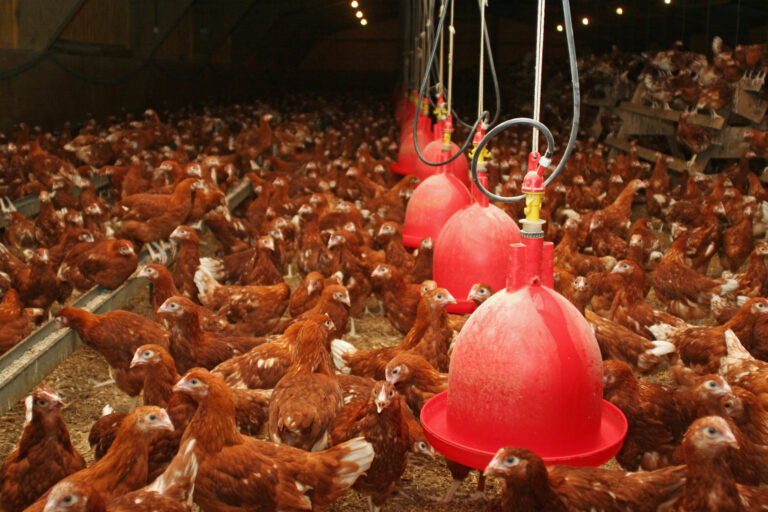Pullet transfer is stressful, but innovative supplements can help support birds’ intestinal health, says Sara Flisi of Vetagro technical service
Intestinal health is one of the most important aspects of animal production. The intestine acts as the main line of defence against pathogens and it is the organ deputed to nutrient absorption. Both functions have pivotal importance for animal health and production.
The intestinal mucosa and its barrier function are essential to ensure protection from the passage of toxins and pathogens into the bloodstream. The integrity and trophism of this mucosa are necessary for the optimum nutrient absorption. Stressful periods have a great impact on the intestinal health, exposing the animal to infections, toxemia and performance reduction. Some of these periods, unfortunately, are unavoidable.
For example, pullet transfer commencing with the start of lay, with all the related physiological changes of the body and the metabolism. Then, at the peak of production, a huge amount of energy is required: this stress can adversely affect the intestinal integrity and trophism with the overall reduction in nutrient absorption (especially minerals such as calcium, and vitamins) and the consequential loss of production. During the productive cycle, this reduced intestinal health can sometimes be related to visible clinical pathologies, but in most cases there are no clinical signs and it is difficult to detect it earlier enough to intervene promptly.
Hence, it is vital to maintain the intestinal mucosa integrity for the optimum gut health throughout the laying cycle ensuring the birds welfare, general wellbeing with improved immunity and sustainable production metrics.
To address this particular subject, specific feed additives like organic acids (OA) and nature identical compounds (NIC) can be used. Organic acids are commonly used as feed preservatives because of their antimicrobial activity, whereas some flavouring compounds such as nature identical compounds (NIC) have also shown a strong antimicrobial effect. NIC are molecules identical to the active ingredients of the essential oils but chemically produced. The synthetic production ensures their purity and the lack of contaminants like pesticide and residues, that are even concentrated during the extraction of the essential oils from plants. These molecules are as pore-forming agents, as they create pores in the bacterial membrane with a direct bactericidal effect.
Once ingested in the free form, OA and NIC are highly degraded before reaching the intestine. But they can be extremely useful in the intestine. Thus microencapsulation can protect these molecules through the anterior part of the gastrointestinal tract (proventriculus and gizzard) ensuring the optimum availability of the active ingredients at the intestinal level. They will be released only once the fat matrix will come in contact with lipase enzymes in the intestine. This particular technology is species-specific, with a gaussian distribution of the particle granulometry related to the gastro-intestinal transit time of each animal species. Consequently, the active ingredients are uniformly released along the whole intestinal tract. This particular technology ensures the activity of the ingredients at the intestinal level and their positive effect on every part of this organ.
Microencapsulation of OA and NIC in the same product together in the same beadlet ensures their synergistic activity as antimicrobial and anti-inflammatory agents on the intestinal mucosa. Different studies demonstrated that their combined activity on the intestinal epithelium improves the barrier function and the intestinal health. At the same time, their synergistic antimicrobial activity can modulate the intestinal helping the animal against pathogens.
The latest field trials of Vetagro’s Galliacid S in the UK on the laying hens has revealed significant improvements in the production metrics. These trials were conducted from Nov 2019 till Jan 2020 on six houses of laying hens with three different breeds. These six houses of hens were fed a standard UK diet supplemented with a blend of essential oils (control groups) or the same standard diet with the microencapsulated product (treated groups) from week 36 to 49 of age. At this age, the animals were in full production and, for this reason, more exposed to pathogens intestinal translocation and reduced nutrient absorption. The results demonstrated that the supplementation of the microencapsulated combination of OA and NIC improved both HD% production i.e. 4 more eggs/HH at week 49, and higher egg weight throughout the trial period compared to the control.
|
|


